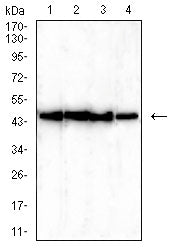
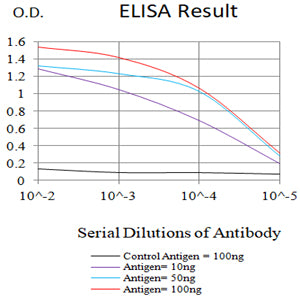
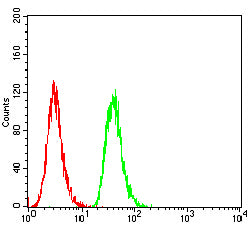
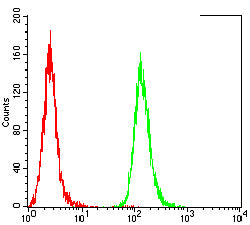
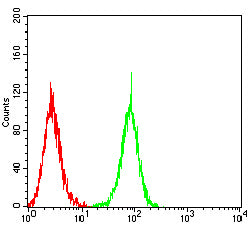
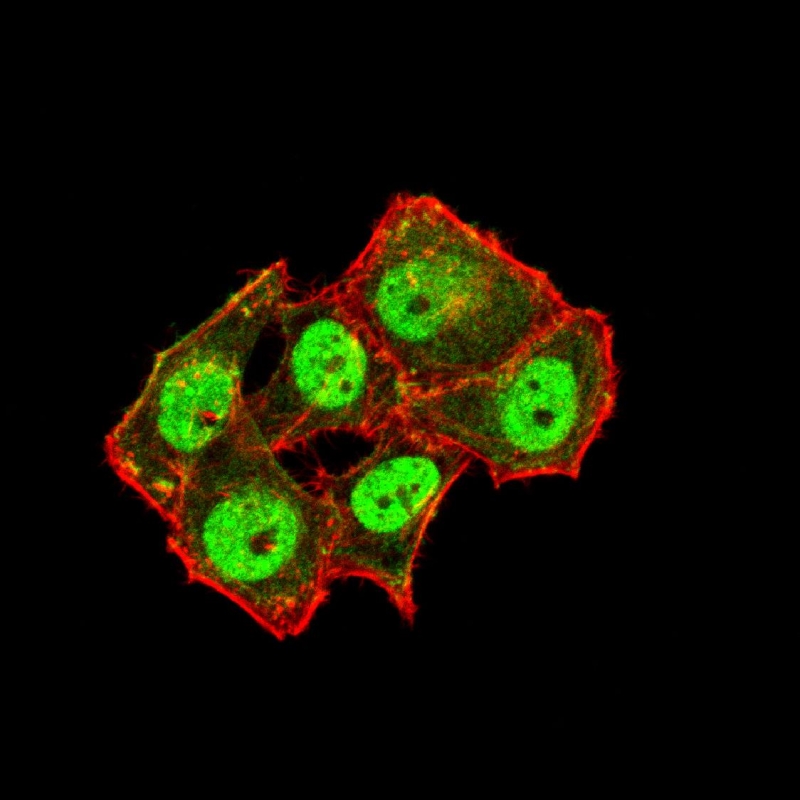
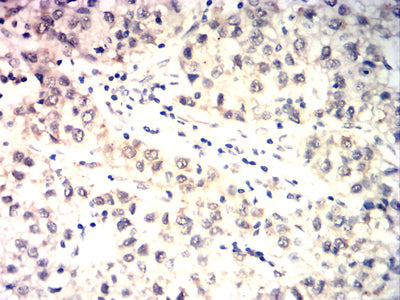
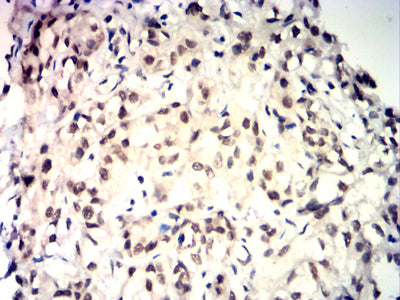
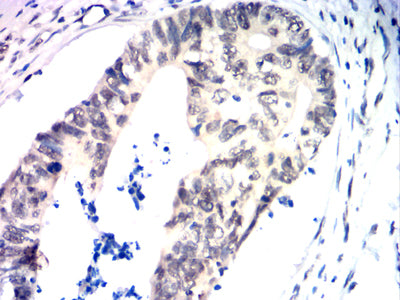
| WB | 1/500 - 1/2000 | Human,Mouse,Rat |
| IF | 咨询技术 | Human,Mouse,Rat |
| IHC | 1/200 - 1/1000 | Human,Mouse,Rat |
| ICC | 1/200 - 1/1000 | Human,Mouse,Rat |
| FCM | 1/200 - 1/400 | Human,Mouse,Rat |
| Elisa | 1/10000 | Human,Mouse,Rat |
| Aliases | ALS10; TDP-43 |
| Entrez GeneID | 23435 |
| clone | 6G2D8 |
| WB Predicted band size | 44.7kDa |
| Host/Isotype | Mouse IgG1 |
| Antibody Type | Primary antibody |
| Storage | Store at 4°C short term. Aliquot and store at -20°C long term. Avoid freeze/thaw cycles. |
| Species Reactivity | Human |
| Immunogen | Purified recombinant fragment of human TDP43 (AA: free peptide) expressed in E. Coli. |
| Formulation | Purified antibody in PBS with 0.05% sodium azide |
+ +
以下是3篇关于TDP43抗体的经典文献摘要概括:
1. **"Ubiquitinated TDP-43 in frontotemporal lobar degeneration and amyotrophic lateral sclerosis"**
- Neumann M, et al. (Science, 2006)
- **摘要**:首次报道TDP-43蛋白异常聚集是额颞叶变性(FTLD)和肌萎缩侧索硬化症(ALS)的关键病理标志,并开发特异性抗体用于检测患者脑组织中的泛素化TDP-43包涵体。
2. **"Phosphorylated TDP-43 in frontotemporal lobar degeneration and ALS"**
- Arai T, et al. (Ann Neurol, 2009)
- **摘要**:通过磷酸化特异性抗体揭示ALS/FTLD患者中TDP-43的异常磷酸化修饰,提出磷酸化抗体在疾病病理诊断中的特异性应用价值。
3. **"Antibody-based characterization of pathological TDP-43 aggregates in ALS and FTLD"**
- Hasegawa M, et al. (Acta Neuropathol, 2008)
- **摘要**:开发多种TDP43抗体,验证其在区分病理性聚集形式(如C末端片段)和正常核定位TDP-43中的作用,为病理分型提供工具。
4. **"Differential antibody recognition of pathologically aggregated TDP-43 in neurological diseases"**
- Igaz LM, et al. (J Neuropathol Exp Neurol, 2009)
- **摘要**:比较不同TDP43抗体在阿尔茨海默病、ALS等疾病中的反应差异,强调抗体选择对病理诊断结果的影响。
(注:以上文献为领域内代表性研究,具体引用时请核对原文信息。)
TAR DNA-binding protein 43 (TDP-43) is a ubiquitously expressed RNA-binding protein encoded by the *TARDBP* gene. It plays critical roles in RNA metabolism, including splicing, transport, and stability. Pathologically, TDP-43 is a major component of aberrant protein aggregates observed in neurodegenerative diseases such as amyotrophic lateral sclerosis (ALS), frontotemporal lobar degeneration (FTLD-TDP), and Alzheimer’s disease. In these conditions, TDP-43 undergoes mislocalization from the nucleus to the cytoplasm, forming hyperphosphorylated, ubiquitinated inclusions that disrupt cellular function and contribute to neurodegeneration.
Antibodies targeting TDP-43 are essential tools for studying its physiological and pathological roles. They enable detection of both normal nuclear TDP-43 and pathological aggregates in tissues or cell models using techniques like immunohistochemistry, Western blotting, or immunofluorescence. Specific antibodies can distinguish between normal and disease-associated forms (e.g., phosphorylated or truncated TDP-43), aiding in disease diagnosis and mechanistic research. Additionally, TDP-43 antibodies are used to explore its interactions with RNA or other proteins, its role in stress granule dynamics, and the effects of *TARDBP* mutations linked to familial ALS.
Challenges include ensuring antibody specificity due to post-translational modifications or structural changes in pathological TDP-43. Despite this, these antibodies remain vital for advancing understanding of TDP-43 proteinopathies and developing targeted therapies.
×